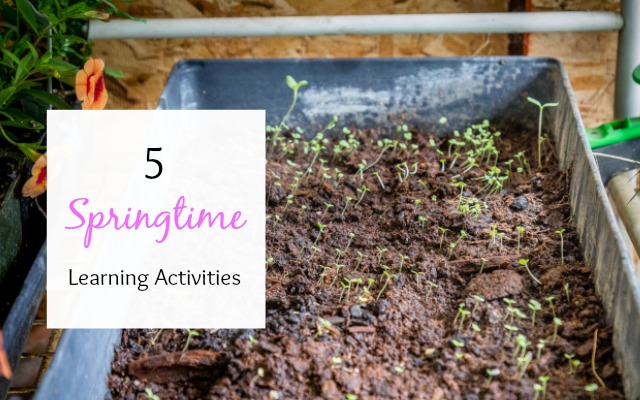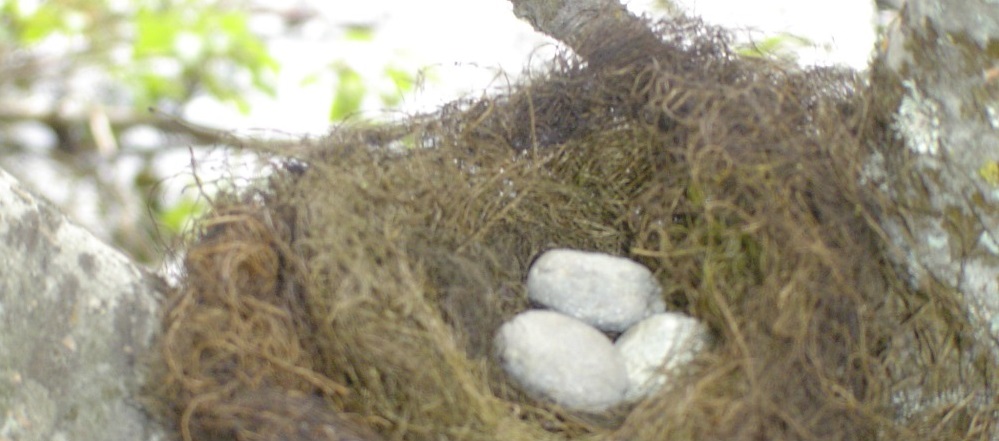5 Springtime Learning Activities


Are your kids as excited about spring being here as mine are? After being inside most of the winter, the warm fresh air feels amazing.
If you’re looking to add some seasonal fun to your homeschooling days, here are five springtime learning activities.
1. Build a Nest
Using a variety of natural supplies, your child can create a bird’s nest. Dried grass, moss, thin twigs, and lichen from trees work well. You can use stones for eggs to make it look more realistic.
My kids decided to put theirs in a tree in the yard. They love checking it out each day when they head out to play.

As you work together to build a nest, you’ll bring animal science to life. You can discuss the following:
• Characteristics of birds.
• Types of nests.
• Other animals that lay eggs.
• Bird migration patterns.
• Animal instincts.
• God’s amazing Creation.
2. Take a Spring Nature Walk
With all the changes going on, spring is a great time of year for taking a nature walk. Bring a camera along and let your children document any signs of spring they see. Or have them sketch them in a notebook.
When you get back inside, take time to look over the images or drawings.
You can even turn this into a scavenger hunt if you’d like. Write each of the following items on a paper for each child and see who can cross off the most. It’ll encourage them to keep their eyes peeled as they walk.
• Budding leaves
• Baby animals
• Bird nests
• Birds flying back from the south
• Rising rivers or streams
• Mud puddles
• Worms
• Butterflies
• Caterpillars
• Flowers growing
• A bird’s nest in a tree
3. Create Spring-themed Projects
There are plenty of springtime topics children enjoy learning more about. They can turn these into a variety of fun projects.
Here are some ideas:
Picnic Theme
• Create a picnic alphabet book to share with a younger sibling.
• Design a new sandwich to try, give it a fun name, and create a brochure or advertisement for it.
• Plan a menu for an upcoming picnic (my kids enjoy cutting images out of the ads section of newspapers for this).
Baseball Theme
• Create a set of homemade baseball cards.
• Draw a baseball picture and label the field.
• Write an article about a recent game including each of the 5 Ws.
Kite Flying Theme
• Write a story about a child who flies away on a kite string.
• Make a kite.
• Write a list of words that rhyme with kite, sky, and tail. For even more ideas, check out this post of Family Writing Time Activities for Spring.
4. Play Hibernating Bear
This simple game is perfect for your younger learners. It gets them active and helps them learn more about hibernation.
First, gather a pile of blankets. Use these to transform underneath your table into a cozy cave.
Pick one person to be the bear first. The bear needs to gather berries and fish to eat before winter comes. This is a great imagination building piece! What can they find for berries? Can they make a river from a blanket or something?
Once the bear has eaten, it’s time to return to the cave. Have them pretend to sleep.
Now, the other players pretend winter is here. They can build a snowman from pillows, make a snow angel, or have a paper snowball fight.
As spring comes, the bear begins tossing and turning, getting ready to wake up. The winter activities slowly turn into spring ones, and the bear wanders out of the cave ready to find food.
5. Plant Something
Gardening helps kids learn so many skills, including knowing where food comes from. If you don’t have a lot of space, pick something you can grow in a container.
Work with your child to pick out seeds and read the directions on the packet. Learn about what zone you are in.
Then, help your child prepare the pot or ground, and plant the seeds. Encourage him to water the plants as the soil dries out.
With a spiral notebook, your child can create a gardening journal. Let them draw what they see each day on a single page.
They’ll be able to look back and count how many days it took for the first green to show above the soil. They can see how many days it took for leaves to appear. It’s a great scientific project!
You can also practice measuring by using a ruler to see how tall each plant is getting.
What are your favorite spring learning activities?
Will you give any of these activities a try? Do you have another favorite learning activity for spring? I’d love for you to share in the comments section below.
Lisa Tanner is a homeschooling mom of eight. She loves writing about balancing diapers and deadlines, and ways to make learning fun.










































